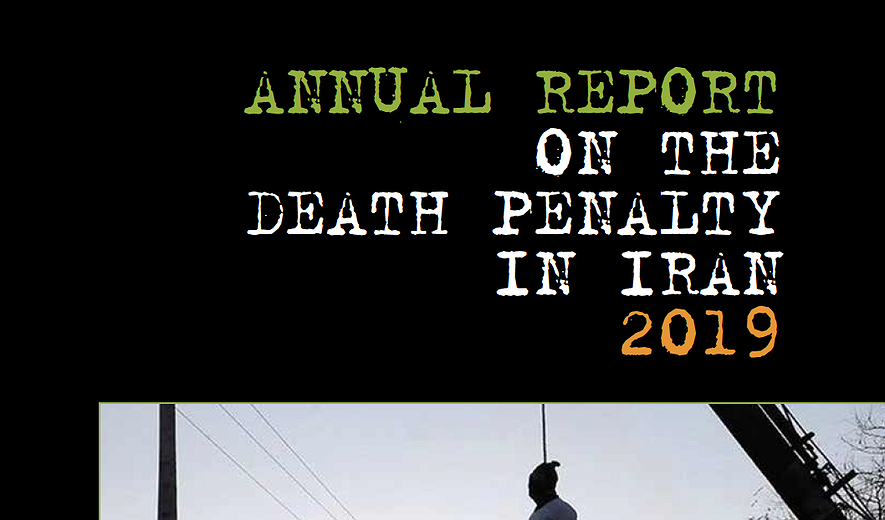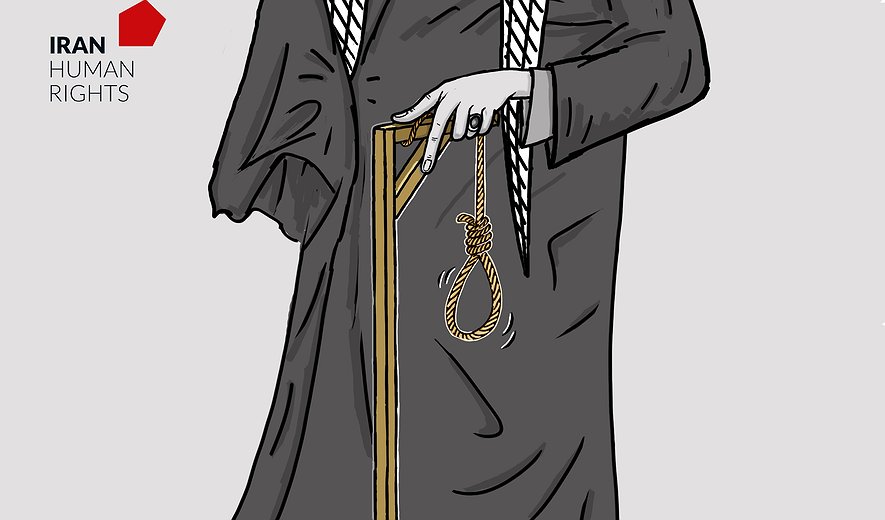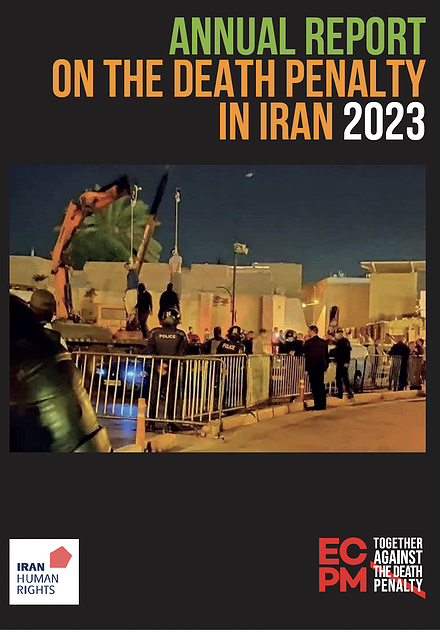Iran: Public Executions in 2019
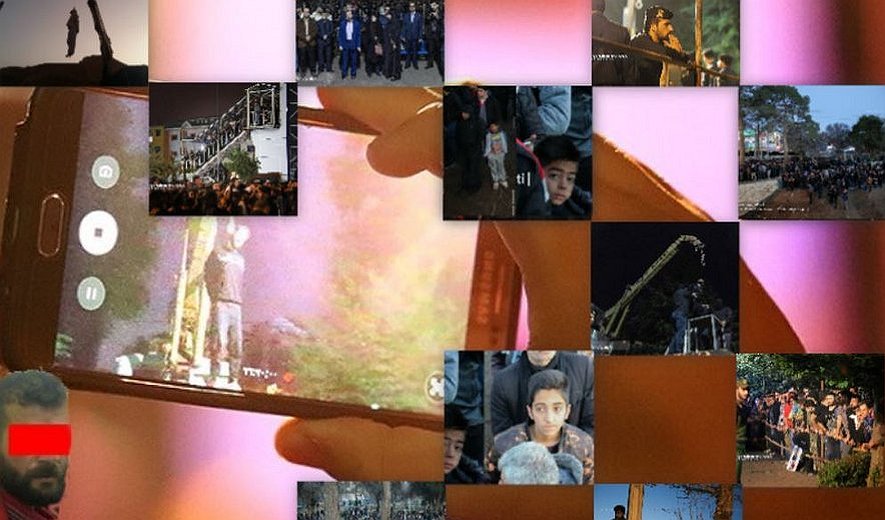
Iran Human Rights (IHR): The 12th annual report on the death penalty by Iran Human Rights (IHR) and ECPM (Together Against the Death Penalty) provides an assessment and analysis of the death penalty trends in 2019 in the Islamic Republic of Iran. It sets out the number of executions in 2019, the trend compared to previous years, the legislative framework and procedures, charges, geographic distribution and a monthly breakdown of executions. Lists of the female and juvenile offenders executed in 2019 are also included in the tables.
The report also looks into the abolitionist movement within Iran, including the forgiveness movement and its contribution to limiting the use of the death penalty, the artists and filmmakers attempting to promote abolition, and the authorities’ attempt to promote the death penalty and crackdown on human rights defenders.
In this article, you will read a section of the report regarding Public Executions in Iran in 2019.
For references and more, see the Annual Report of the Death Penalty in Iran (pdf)
Despite continuous international criticism, Iran is among the few countries where public executions have been organized by the authorities.
Public executions have repeatedly been criticized by the UN. Both the UN Secretary General and the Special Rapporteur on the human rights situation in Iran have expressed concern about the continued practice of public executions in Iran98. During Iran’s second UPR99, the Government did not accept the recommendations to put an end to public executions.
This has also been emphasized in the recent report of the current Special Rapporteur on Human Rights in Iran, Javaid Rehman.
In 2008, a judicial moratorium on public executions was adopted by the Iranian authorities. As a consequence, the number of public executions in 2008-2010 was relatively lower than in the previous years. However, after 2010 the number of public executions increased dramatically, reaching an average of 50 to 60 public executions between 2011-2015. As in 2018, in 2019 the Iranian authorities executed 13 people in public spaces. This is the lowest number of public executions since 2009 (the year after the moratorium, 9 public executions were implemented). Whether there is a political decision behind this reduction remains to be seen.
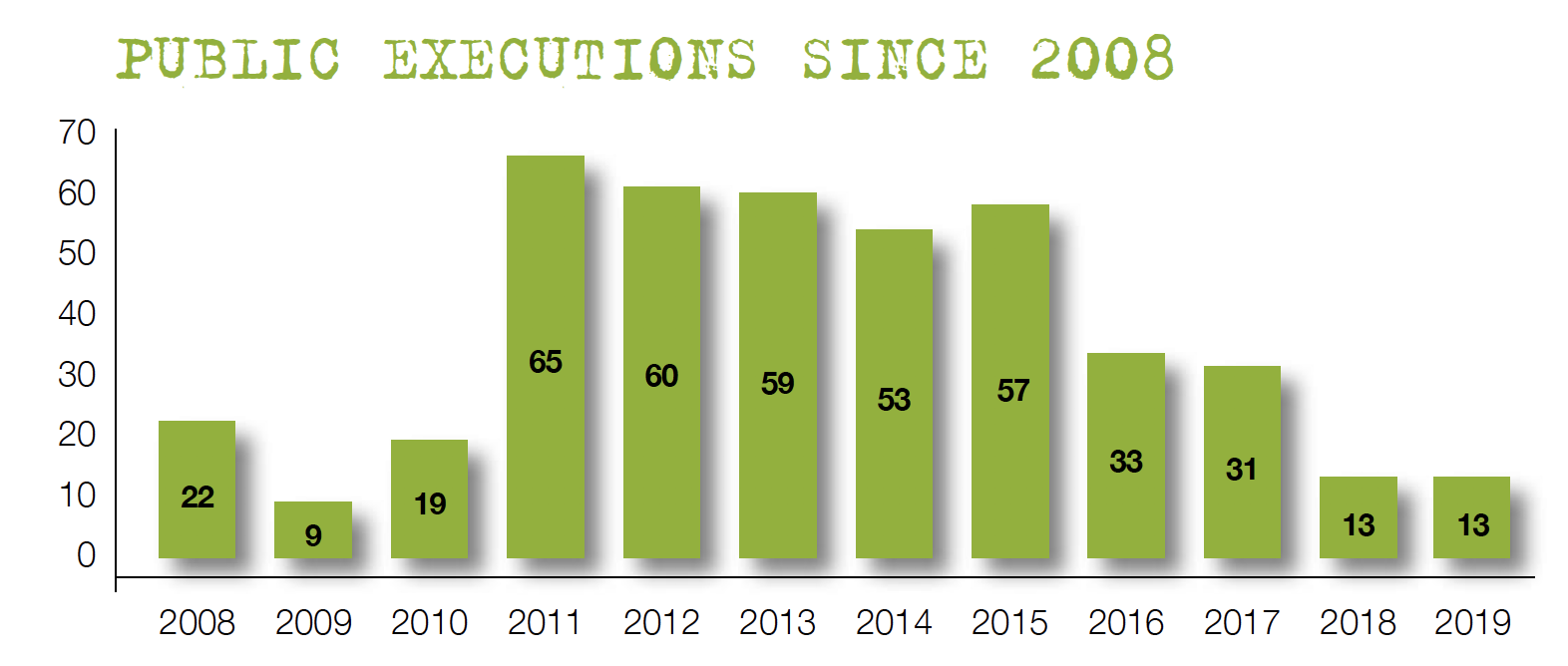
The diagram above shows public executions since 2008. The numbers of public executions in 2018 and 2019 were the same and significantly lower than the number in the previous seven years. Whether it is a permanent change or not remains to be seen. However, public executions were conducted in 2 more provinces than in 2018.
GEOGRAPHIC DISTRIBUTION OF PUBLIC EXECUTIONS
Public executions were conducted in 8 different provinces in 2019, compared to 6 provinces in 2018. Fars province (Southern Iran) topps the public executions as in 9 of the last 10 years.
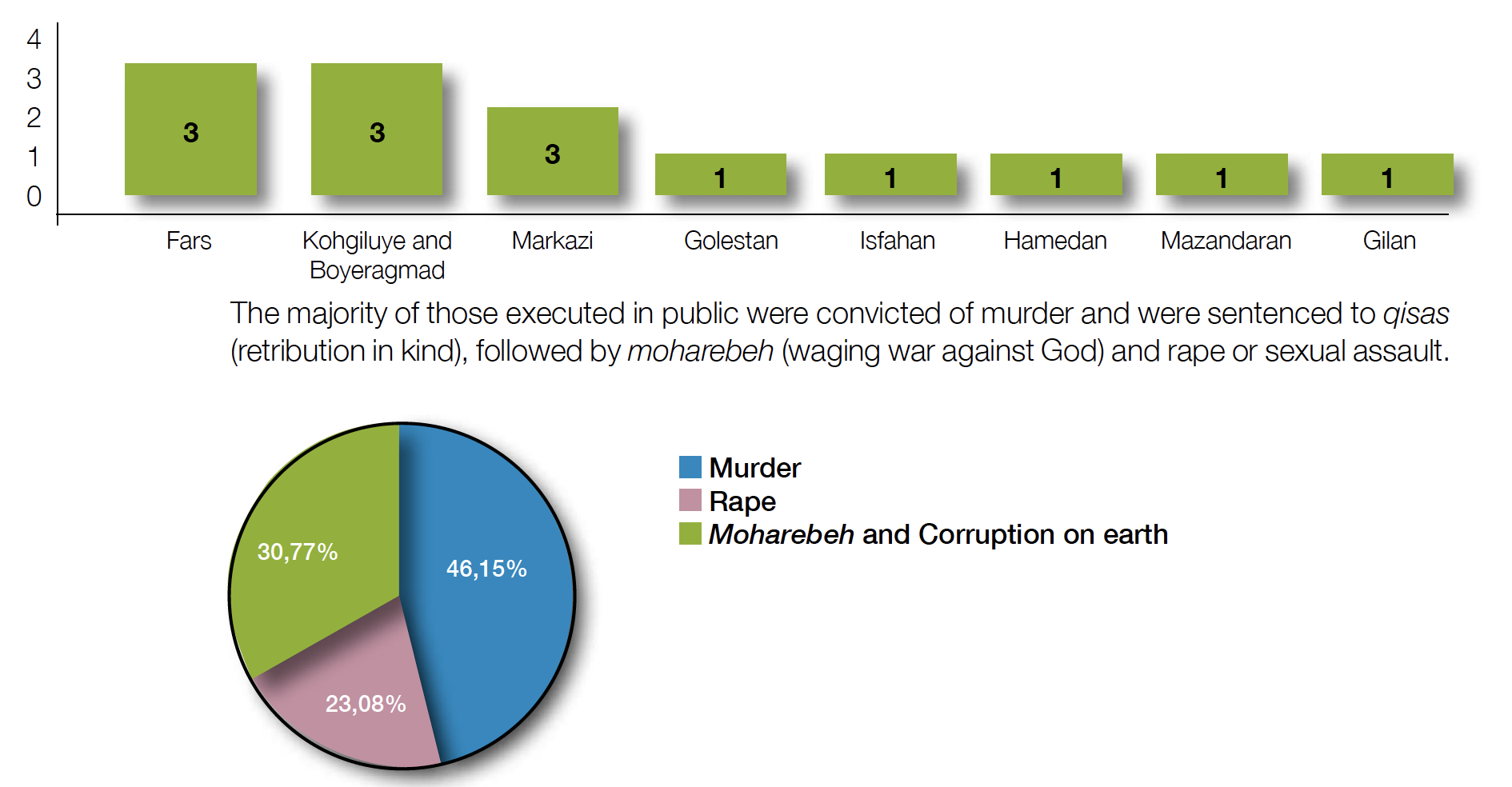
PUBLIC EXECUTIONS DOCUMENTED BY THE IRANIAN MEDIA
In 2015, in response to a joint statement by two of the UN Special Rapporteurs condemning the practice of public executions by the Iranian authorities, the “High Council for Human Rights” of the Iranian Judiciary issued an official statement saying, “public executions take place only in some limited and special circumstances, including incidents which distort public sentiment, to act as a deterrent to decrease the number of drug-related crimes. It should also be noted that the mentioned sentences are provided to avoid the presence of minors at the scene of executions”.
A directive published by the Head of the Judiciary in June 2019 states that the presence of children under the age of 18 years is banned, unless expressly approved by a judge.103 However, photos taken from the execution scene in previous years demonstrate that children are often present at these events. Executions are often announced in advance and take place early in the morning in front of dozens of citizens. In 2019, children watching the public executions. Nonetheless, all the reports, information and testimonies reveal that in 2019 executions were carried out in public spaces such as popular parks or in residential areas in front of a crowd of several hundreds. No reports indicate any specific measure taken by the authorities to limit the presence of children.
CHILDREN WATCHING AN EXECUTION IN ISFAHAN PROVINCE

Photo shows a child who was among those who watched an execution on January 15, 2019 in Falavarjan city, Isfahan province.

Authorities setting up the execution stage before midnight in a popular park in Falavarjan city, Isfahan province. Photo: Majid Hojati

A large crowd gathered in the park watching an execution. Falavarjan city, Isfahan province
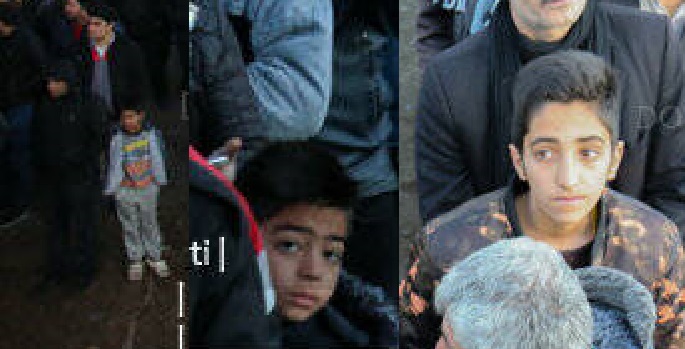
As in all other public executions, there are many children present among the crowd. Pictures showing close-ups of three of the children watching the execution in Falavarjan city.
IRANIAN STATE TV PROMOTING A PUBLIC EXECUTION IN RASHT
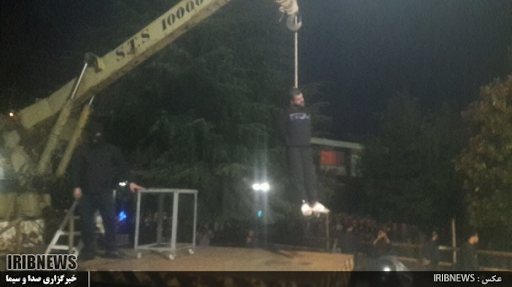
The public execution in Rasht (October 2, 2019) was broadly covered by the official media. Here is a picture published on the websites of State TV. The man was sentenced to death for the assassination of a police officer.

Picture showing the reporter with the execution stage in the background while reporting for State TV.
For references and more, see the Annual Report of the Death Penalty in Iran (pdf)
